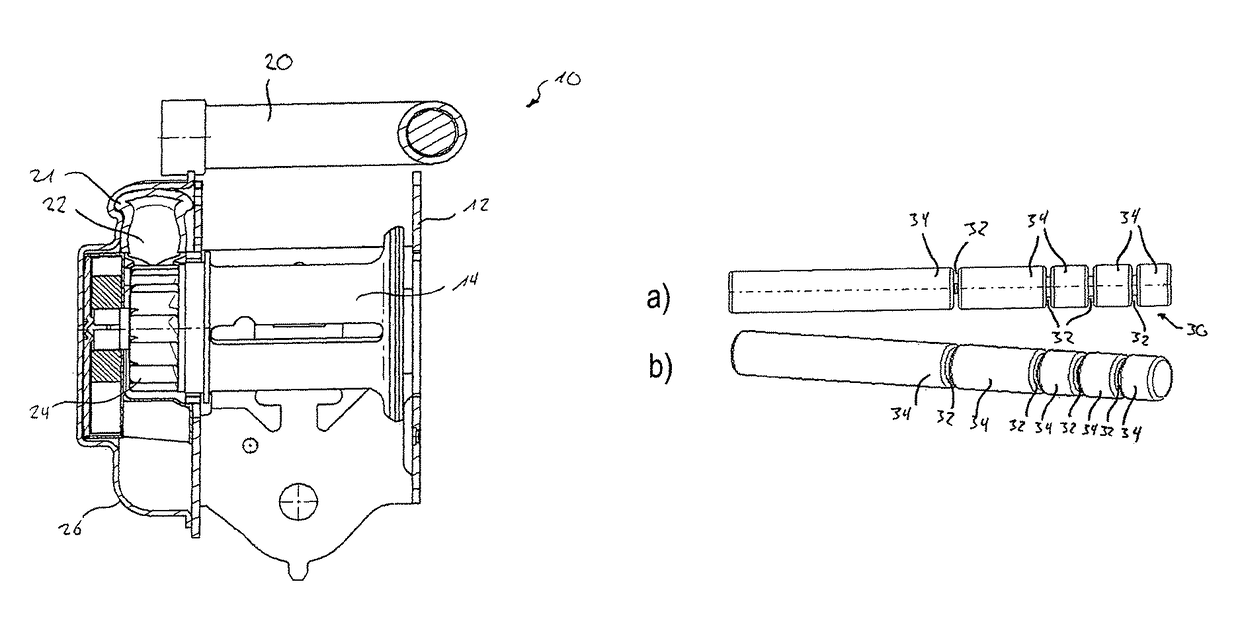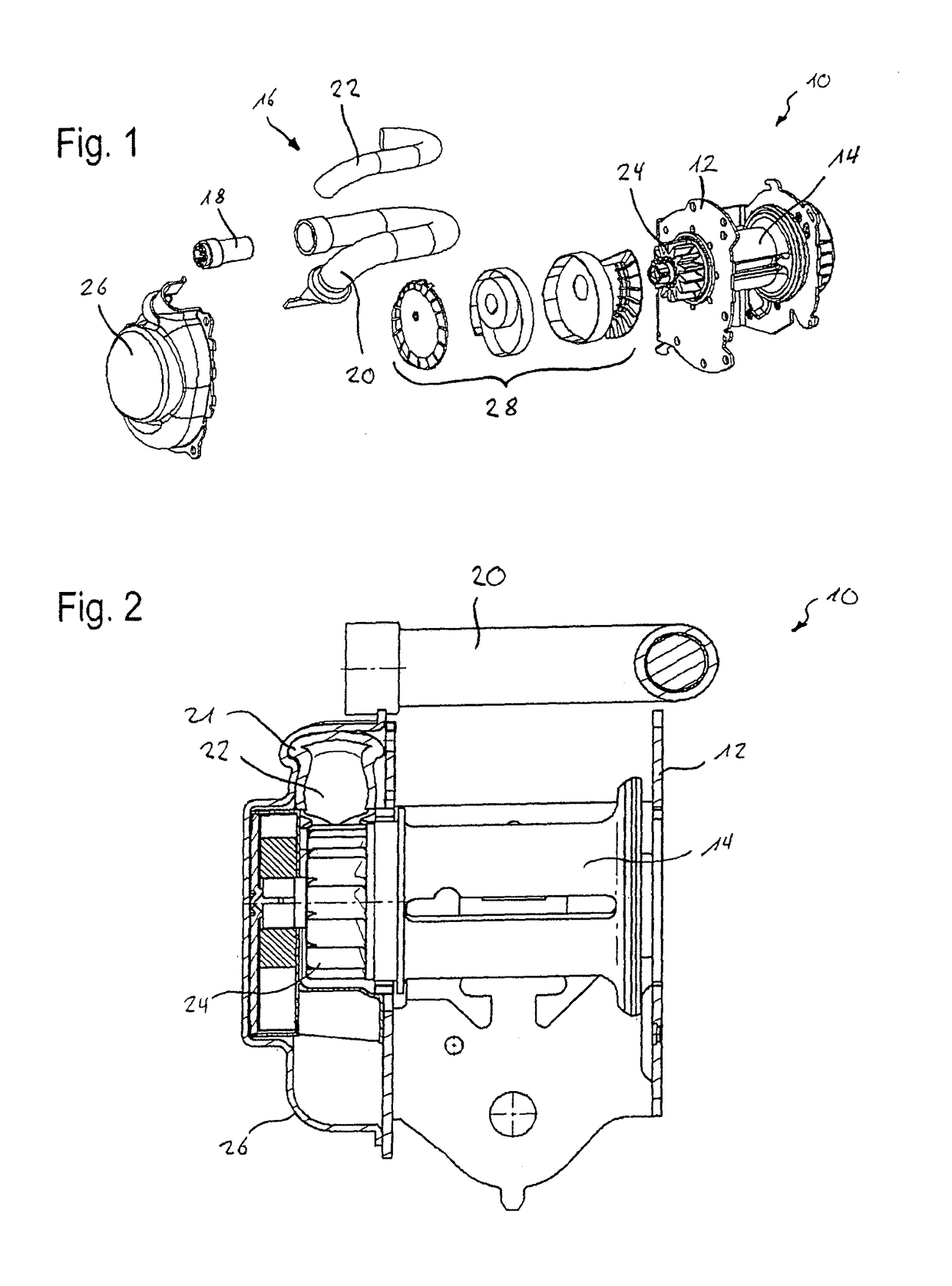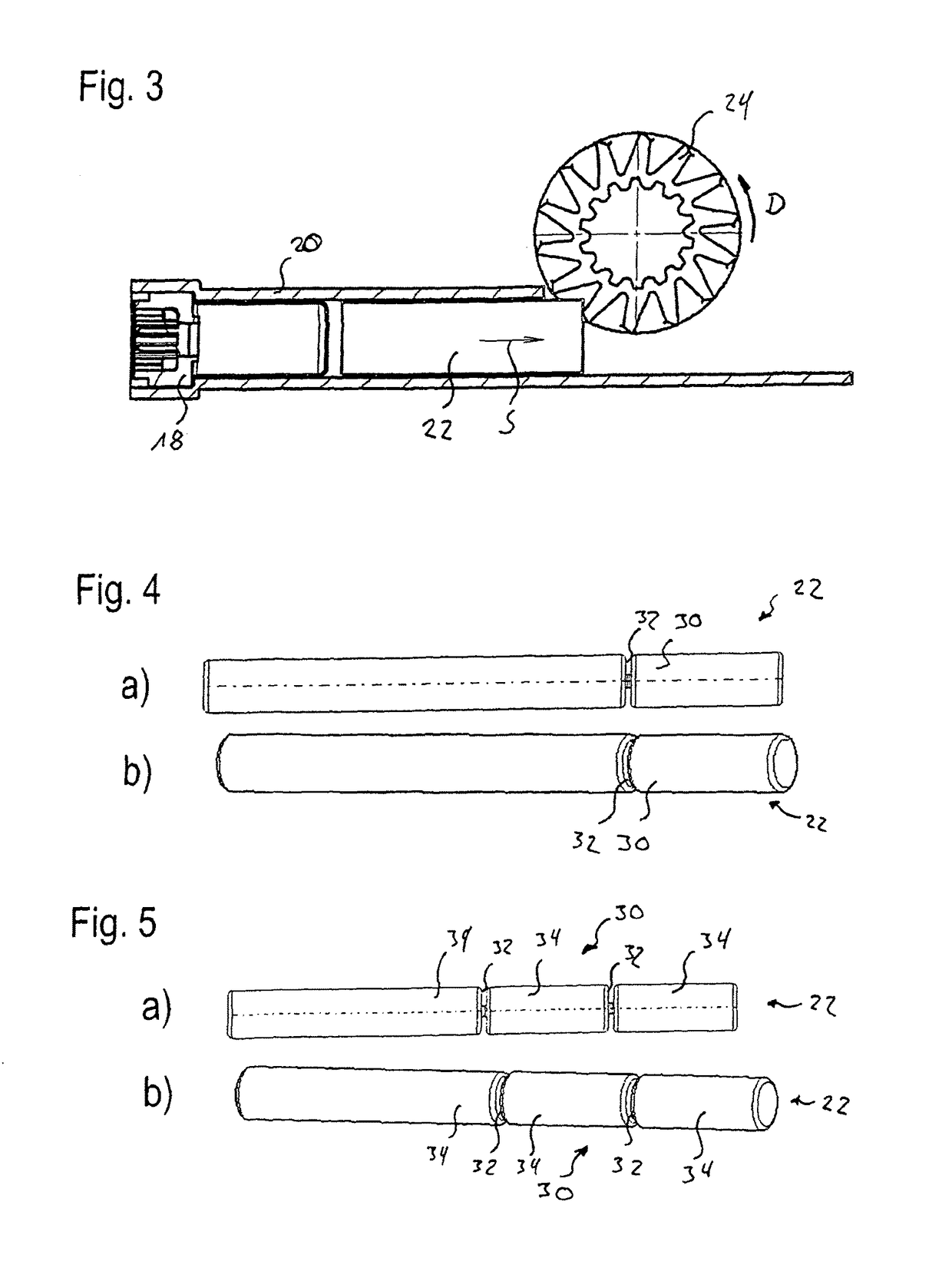Seatbelt retractor
a retractor and seatbelt technology, applied in the field of seatbelt retractors, can solve the problems of increasing the compressive force required for inserting the force-transmitting element, affecting the responsive behavior of the force-limiting device, etc., and achieves the effect of sufficient tightness and sufficient pressure build-up
- Summary
- Abstract
- Description
- Claims
- Application Information
AI Technical Summary
Benefits of technology
Problems solved by technology
Method used
Image
Examples
Embodiment Construction
[0027]In FIG. 1 the substantial component parts of a belt retractor 10 comprising a pyrotechnically driven belt tensioner 16 are shown. In FIG. 2 the belt retractor is illustrated in the assembled state. The belt retractor 10 comprises a frame 12 to which a belt reel 14 is pivoted onto which a seat belt can be wound. Furthermore the belt retractor 10 includes a force-limiting device not shown here in detail.
[0028]The belt tensioner 16 of the belt retractor 10 includes a pyrotechnic drive unit 18, a tensioner tube 20 having a bent tubular portion 21, a force-transmitting element 22 disposed in the tensioner tube 20 as well as a pinion gear 24 coupled to the belt reel 14. The component parts of the belt tensioner 16 are jointly arranged in a tensioner housing 26. In FIG. 1 furthermore the retracting mechanism 28 of the belt retractor 10 is shown. This mechanism is not important to the function of the belt tensioner 16 and the force-limiting device, respectively, so that it is not expl...
PUM
 Login to View More
Login to View More Abstract
Description
Claims
Application Information
 Login to View More
Login to View More - R&D
- Intellectual Property
- Life Sciences
- Materials
- Tech Scout
- Unparalleled Data Quality
- Higher Quality Content
- 60% Fewer Hallucinations
Browse by: Latest US Patents, China's latest patents, Technical Efficacy Thesaurus, Application Domain, Technology Topic, Popular Technical Reports.
© 2025 PatSnap. All rights reserved.Legal|Privacy policy|Modern Slavery Act Transparency Statement|Sitemap|About US| Contact US: help@patsnap.com



